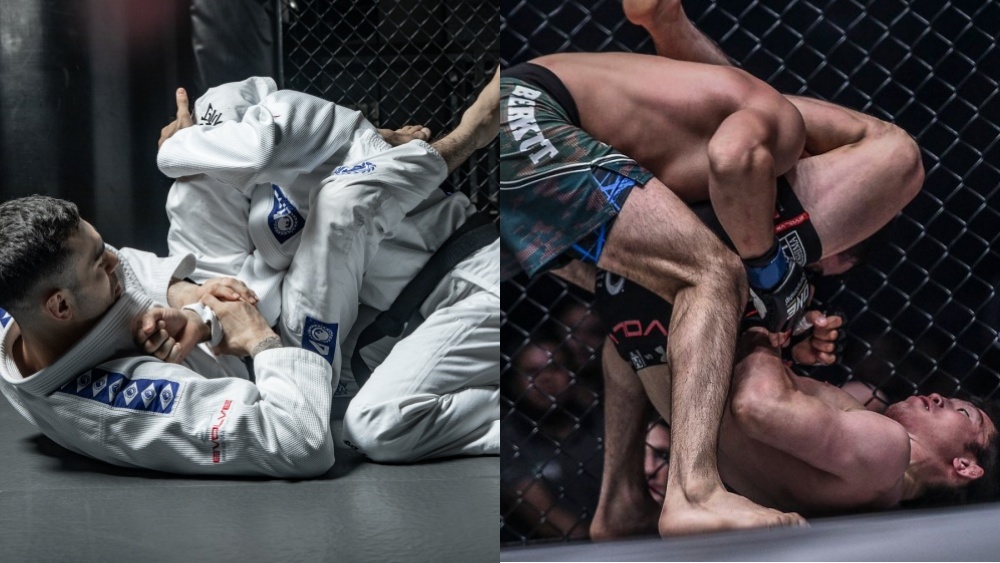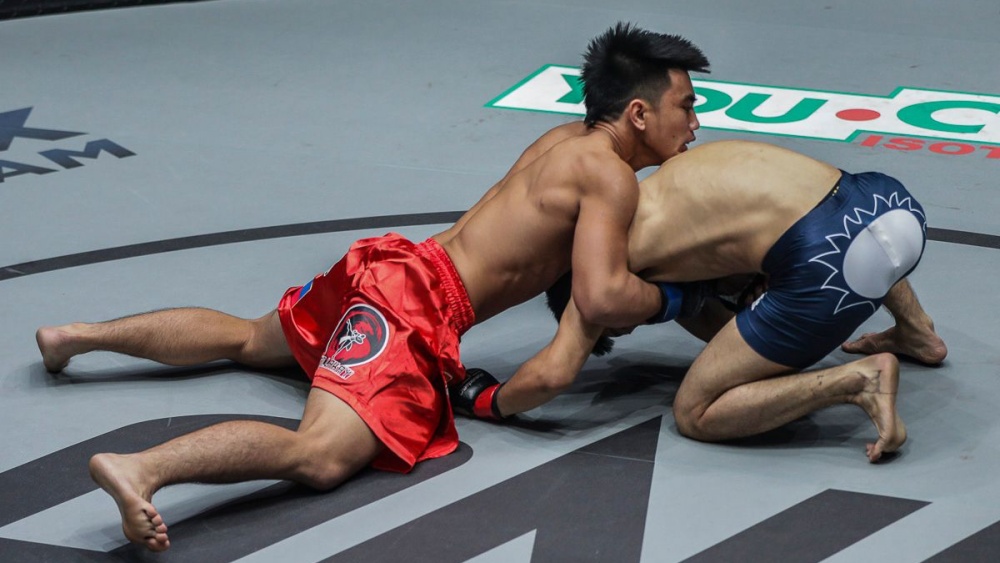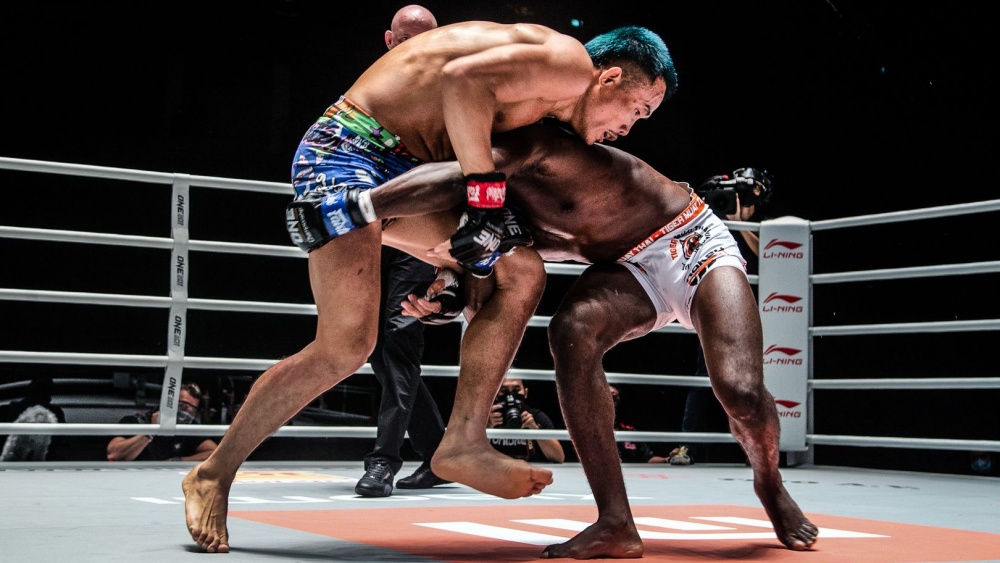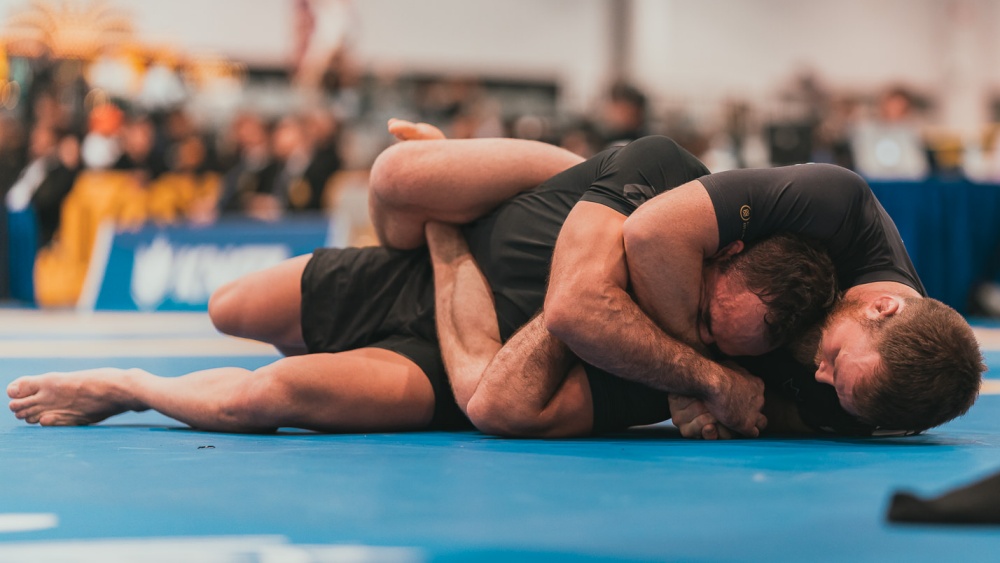Brazilian Jiu-Jitsu became one of the top martial arts worldwide, thanks to how effective the style proved to be during the early days of mixed martial arts. MMA has since evolved into a unique fighting style on its own, with gyms popping up all over the place.
Many BJJ techniques and positions are still commonly used in mixed martial arts, but MMA grappling has evolved to be its own thing since adding strikes changes the dynamics of grappling positions. While BJJ remains an excellent base for mixed martial arts, you’ll need to modify many of your techniques to make them more effective inside a cage.
This article will explore the main similarities and differences between BJJ and MMA grappling to give you a better understanding of how strikes affect grappling inside a cage.
Understanding The Similarities And Differences Between BJJ And MMA Grappling
Brazilian Jiu-Jitsu is a modern martial art that was developed in the 20th century by Helio Gracie and his brothers who modified traditional Jiu-Jitsu techniques to make them better suited for ground fighting. It’s a sport that also happens to be one of the most effective self-defense systems for one-on-one hand-to-hand combat.
Mixed martial arts started as a ruleset used in professional fighting tournaments. These rules were created to develop a sport that allows martial artists from striking and grappling backgrounds to compete against each other to determine which style was the best. Modern MMA has evolved into a martial art and self-defense system that includes aspects of wrestling, Judo, Boxing, Muay Thai, Dutch kickboxing, and BJJ.
Training Differences
Let’s take a look at some of the differences in how BJJ classes are taught compared to MMA grappling classes.
1) Attire
Most BJJ schools teach sport BJJ which focuses on submitting opponents with chokes and joint locks. Strikes are not allowed in sport BJJ so students don’t have to worry about getting hit while they train. Sport BJJ can typically be broken down into two categories: gi and no-gi. The former involves wearing a traditional Jiu-Jitsu kimono, while no-gi allows for shorts and T-shirts.
MMA grappling typically forgoes the gi since it’s not allowed in modern mixed martial arts. Students are often allowed to train shirtless since they’ll be shirtless during competitions. It allows them to get used to the feel of grappling with someone without the benefit of having clothes. Even something as simple as a T-shirt makes it significantly easier to control someone’s body, especially if they’re sweaty.
2) Philosophy
MMA grappling involves simulating punches and elbows to discourage fighters from getting too comfortable in positions that are neutral in BJJ but might put them at a disadvantage on the ground like the guard position.
The guard is the trademark position of BJJ, and some would say the bottom player has the advantage there if their BJJ skills are sharp. More submissions can be pulled off from the bottom guard position than the top. There are many sweeps and reversals that can be executed from there as well. The problem is you don’t get points for playing bottom guard in MMA and there’s the danger of ground strikes.
Sport BJJ players get the luxury of playing guard without having to worry about getting punched in the face or losing rounds because they spent most of it on their backs. Combat BJJ, which allows for open-handed strikes, attempts to address this unrealistic aspect of BJJ. However, it’s nowhere as popular as sport Jiu-Jitsu.
3) Takedowns
There’s a much bigger emphasis on takedown defense and takedowns in MMA grappling than in traditional BJJ. BJJ focuses strictly on ground fighting so students are encouraged to start rolling (sparring) sessions on their knees. This ensures most of their sparring time is spent working on ground techniques instead of fighting for takedowns.
Basic takedowns like the single and double leg are taught in BJJ, along with some throws and trips, but students don’t spend as much time working on these aspects of fighting compared to other martial arts like Judo or Wrestling. Many BJJ students mainly work on their takedowns while preparing for competitions.
MMA grappling places more emphasis on takedowns since they score points during fights and allow you to work your ground game. All rounds in MMA start standing up, so you’ll need to know how to take down fighters who have trained in takedown defense to use your ground game on them. MMA fighters often use strikes to set up their takedowns, a luxury BJJ fighters don’t get to enjoy.
MMA fighters also need to learn how to defend against takedowns to prevent opponents from imposing their game plans on them. A well-timed takedown is often enough to steal closely contested rounds in MMA, so you want to make your opponents work hard for each one they get. Good takedown defense also tires opponents out and discourages them from going for more takedowns.
4) Submissions
MMA grappling involves dealing with strikes, poor control due to not wearing a gi, and a cage that can be used offensively and defensively. This changes the tactics used in MMA grappling. Mixed martial artists typically don’t have the luxury of setting up advanced grappling sequences or fancy positions like the deep-half guard, which leaves you vulnerable to strikes.
MMA grapplers tend to stick to the basics and often set up their submissions with strikes. Skilled MMA grapplers often blend their ground strikes with their transitions as well. It’s a skill traditional BJJ players don’t practice.
Similarities
Despite the many differences between MMA grappling and BJJ, there are more similarities than differences. The fundamentals of BJJ still hold inside a cage. Positions like top mount, back mount, half guard, and butterfly guard are as commonly used in MMA grappling as they are in BJJ.
The most commonly used submissions in BJJ like the armbar, rear-naked choke, triangle choke, arm triangle, kneebar, ankle lock, and guillotine choke are all equally effective in MMA. A well-trained BJJ player would have lots of success in mixed martial arts, provided they modified their grappling style for strikes.
BJJ and MMA grappling are both effective for self-defense, but the slight edge goes to MMA grappling since it mentally prepares you to deal with strikes.
You may also like:























